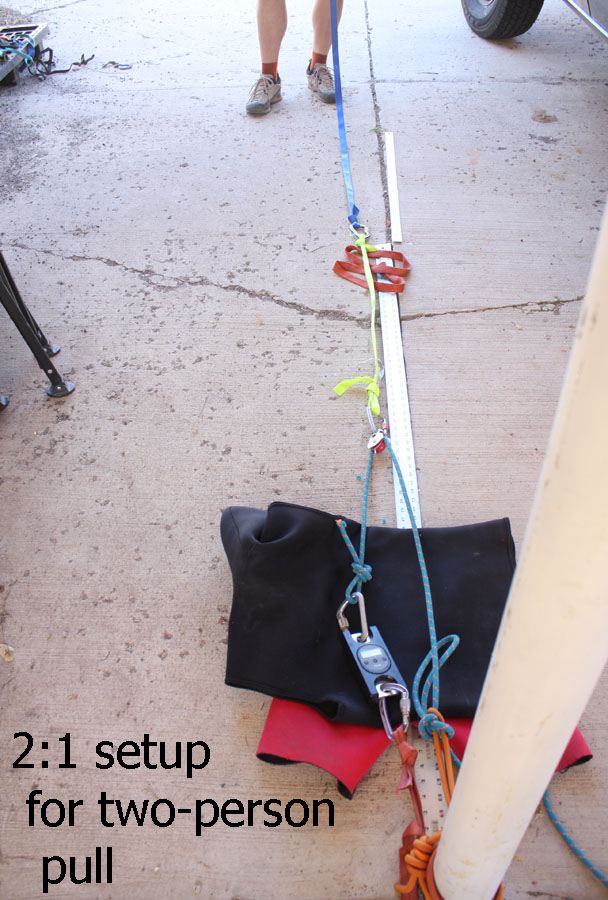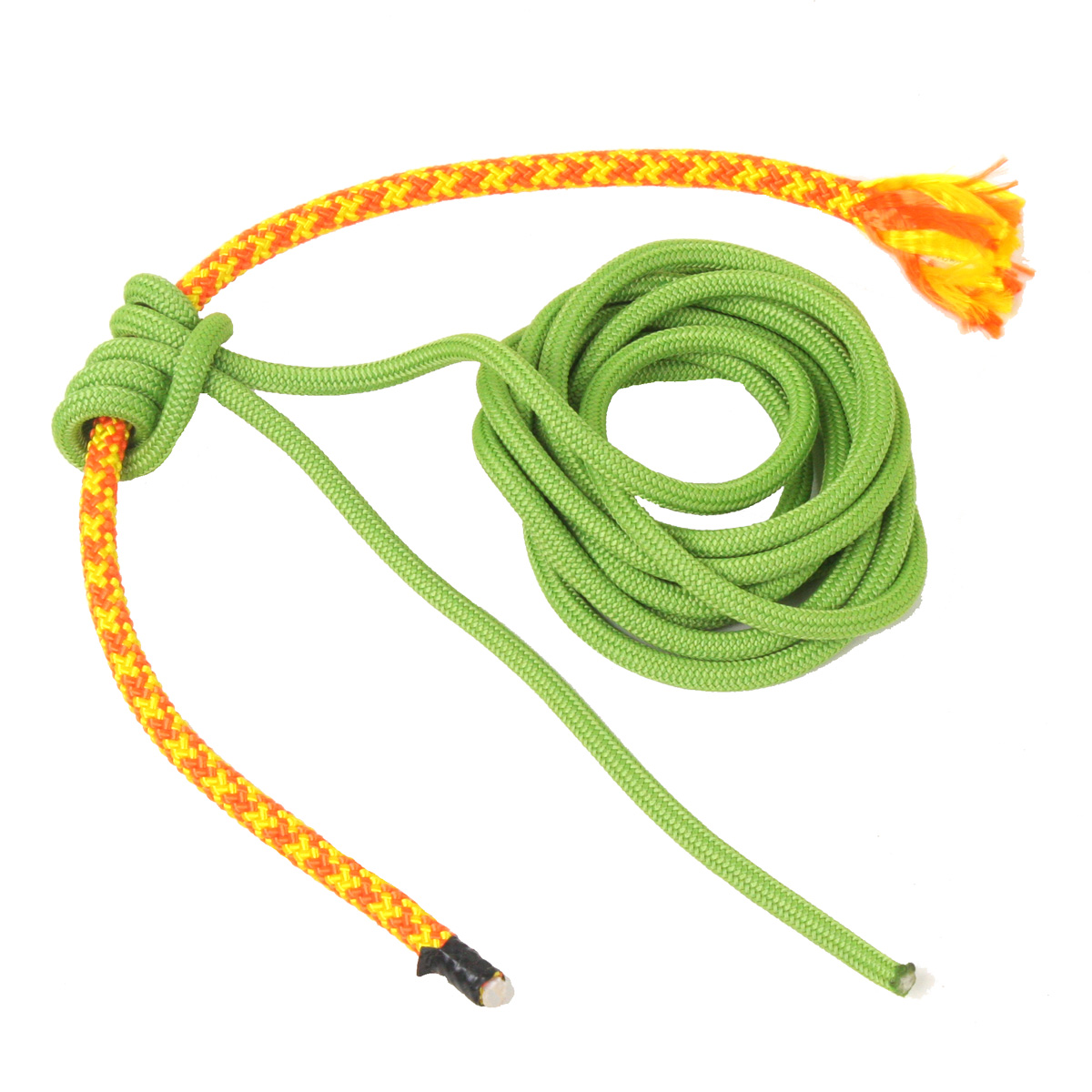Test Report: How Hard Can You Pull?
How Hard Can You Pull? Walking down a canyon, you come to a drop. There is a piece of webbing coming out of the sand. You’re tired, hungry, can smell the beer waiting for you in the truck. You don’t really feel like digging out that deadman and seeing what the webbing is tied to or looks like. So you give a really strong tug on the webbing… good enough. You rap off into the twilight and are soon drinking fine malt beverages.
Is pulling hard on the webbing a valid test?
The question can be broken down into two parts:
How hard can you pull?
Is that hard enough to be an effective test?
This Test Report is about “How hard can you pull?” which is measurable.
The second question is harder to answer. It is a philosophical question, and we wish to provide data that informs a canyoneer’s musings on the subject.
OBJECTIVES
The objective was to measure how much force an average-ish canyoneer could apply to a piece of webbing attached to a secure anchorage.
PREDICTION
Hank and Tom both predicted we would be able to pull with 1.5 to 2.0 times body weight.
TEST PROCEDURES
We tied a piece of webbing to the base of a totally solid post in my carport. A force gauge with peak capture was installed close to the post, then more webbing attached to the other side of the force gauge. Webbing was assorted 1” tubular webbing recycled from Zion canyons. For the two-person pull, we set up a 2:1 using a pulley and some rope, so we would not exceed the 440 lb maximum force of the force gauge.
Testers were Hank Moon (160 lbs, male) and Tom Jones (175 lbs, male). Tom pulled on the webbing using his hands with Atlas Thermofit gloves, while Hank pulled on the webbing by clipping it into his harness. The footing was concrete slab.
Upward Pull Test: in this test, we pulled close to straight up, though it was more like 30-40 degrees off-vertical.
Along Pull Test: in this test we pulled horizontally. We pulled from 10 feet away from the anchor (between 9.5 feet and 10.5 feet).
Style of Pulling: Hank and Tom had different styles of pulling on the anchor, each had two different ways of pulling:
Hank Static: pull as hard as you can without bouncing. Hank Bounce: pull, then let off to maybe 50 lbs, and then give it a good tug with a bounce. Tom Static-bounce: pull hard, then give an extra effort to pull as hard as you can. Tom Bouncy-bounce: pull, then let off to slack, and give it a fast hard yank as hard as you can.
For the two-person test, we clipped a biner to the webbing, and each had our own piece of webbing to pull on, standing side by side. We called 1-2-3-pull and did similar to the Static-bounce described above, both at the same time. We set up a 2:1 scenario on the dynamometer because the one we were using had a load limit of 440 lbs.
For each data point, the maximum of 4 or 5 tugs was recorded. Each of us produced 3, 4 or 5 data points for each test.
TEST RESULTS
Upward Pull Tests
Hank – Static: 218, 440, 440, 430 Hank – Bounce: 212, 107, 144
Tom-Static-Bounce: 218, 218, 208, 195
Along Pull Tests
Hank, Static: 149, 154, 149, 150
Hank, Bounce: 177, 248, 193, 256
Tom, Static-bounce: 138, 170, 168, 196, 200
Tom, bounce: 140, 83, 142, 137, 188
Two Person Along Pull Test
Two-person Static-bounce Along Test: 413, 485, 508
CONCLUSIONS
Hank:
Bouncy testing generally preferable for horizontal loading
A two-person test is generally preferable (total mass at least 2 x mass of heaviest person)
Focus and technique is required to generate the highest loads
Tom: 1-3. What Hank Said.
4. Pulls test inconsistent results, even when carefully administered. I like the 2-person test as it gives more consistent, and definitely more-burly loading.
PLACING THE RESULT IN CONTEXT
This kind of pull test is no substitute for acting smartly, backing the anchor up for all but the last person, rappelling softly, having the lightest person rap last, etc.—all the things that constitute "best practice". Of course, part of "best practice" is to dig the thing up and rebuild from scratch, despite being cold, hungry, ready to finish the day...










